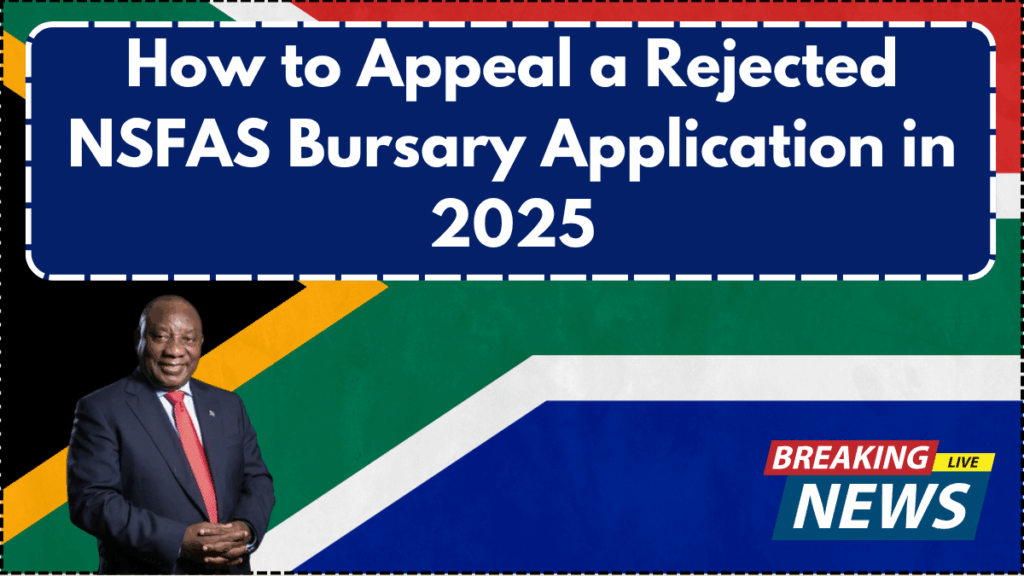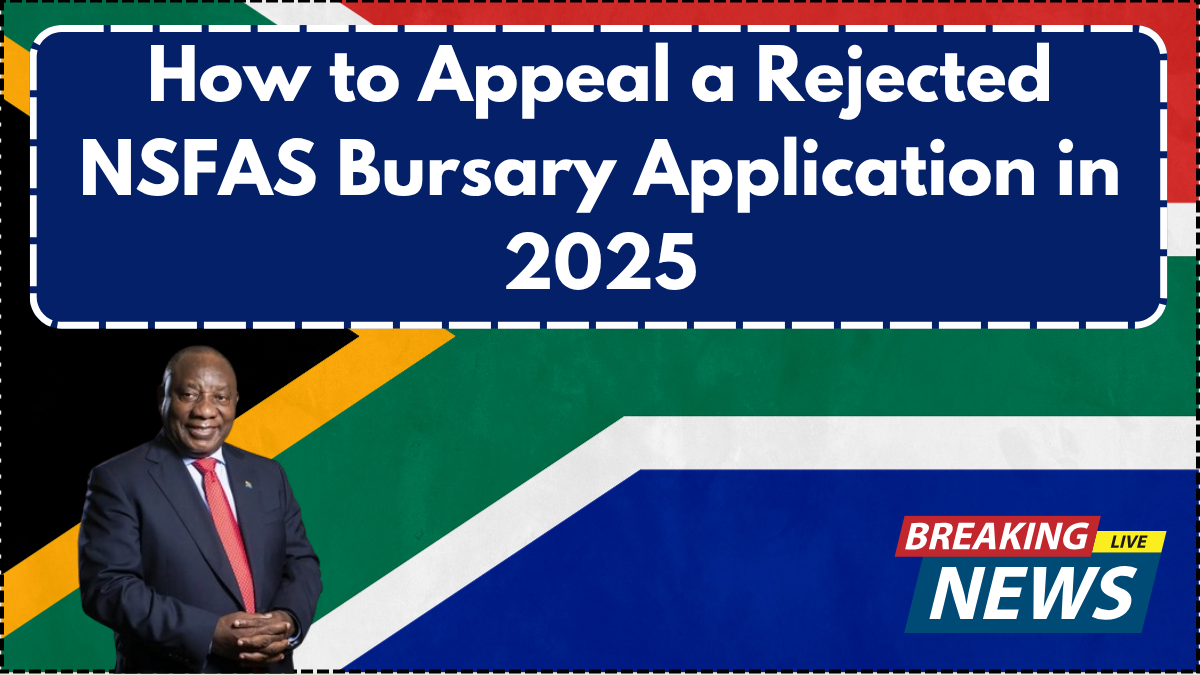If your NSFAS bursary application has been rejected in May 2025, you still have options. Many students panic or give up when they see that rejection notice, but the National Student Financial Aid Scheme (NSFAS) offers a structured bursary appeal process that can get your case reconsidered. This guide walks you through every step you need to take, explains the most common pitfalls, and shows how to use your second chance application wisely.

Understanding the NSFAS Bursary Appeal Process – If You’re Rejected
The NSFAS bursary appeal process exists to give students a fair shot at accessing higher education funding, even after an initial rejection. You’re allowed to appeal if your application was rejected due to:
- Missing documentation
- Academic performance issues
- Income threshold concerns
- Other administrative errors
You need to submit your appeal within 30 days of receiving your rejection status. Appeals submitted after the deadline are not accepted under any circumstance.
How to Submit Your Appeal Form Online
To start your appeal, visit the official NSFAS website and log in to your myNSFAS account. From there:
- Click on the “Track Funding Progress” tab.
- If your status says “Rejected”, look for the “Submit Appeal” button.
- Download and complete the appeal form. This is a critical document — ensure all sections are filled out honestly and thoroughly.
- Upload supporting documents, such as updated proof of income, academic transcripts, or a motivation letter if required.
Be precise and avoid emotional appeals. Your documentation and clarity are what will make or break the appeal.
What Documents Strengthen a Second Chance Application?
A second chance application is often only successful when it’s backed by proper documentation. Depending on your rejection reason, these are examples of helpful attachments:
Rejection Reason | Useful Supporting Document |
|---|---|
Academic Failure | Letter from academic advisor, new academic report |
Income Over Threshold | Updated payslip, proof of retrenchment, sworn affidavit |
Missing Documents | Certified copies of ID, parent/guardian documents |
Disability Declaration | Medical certificate from registered practitioner |
Submit clear, legible, and up-to-date documents. Always verify that they match the appeal form and don’t contradict your original submission.
Timeline and What to Expect After Submitting Your Appeal
NSFAS typically responds to appeals within 30–45 working days. During this period, check your myNSFAS portal regularly for updates. If your appeal is successful, your funding will be reinstated and backdated to cover the academic year. If it’s denied, you will receive specific reasons and won’t be able to appeal again for that cycle.
Tips to Avoid Bursary Rejection in the Future
- Always double-check your documents before uploading.
- Make sure your academic performance meets the minimum criteria.
- Keep your contact details updated in your NSFAS profile.
- If your financial situation changes mid-year, update NSFAS immediately.
Being proactive and meticulous can prevent you from needing to go through the appeal process next time.
Conclusion
A rejection from NSFAS in May 2025 is not the end of the road. With a well-prepared bursary appeal process – if you’re rejected, you still stand a solid chance of securing your funding. Take the process seriously, act quickly, and make sure your appeal form and documents are bulletproof. Your education is worth fighting for — and this second chance could be the key to your future.
FAQs About the NSFAS Bursary Appeal Process in 2025
Who can appeal an NSFAS rejection?
Anyone whose application was rejected due to documentation, financial, or academic issues and believes they have a valid case.
Where can I get the NSFAS appeal form?
You can download the appeal form directly from your myNSFAS account under the “Funding Progress” section.
Can I appeal more than once?
No. NSFAS allows only one appeal per academic cycle.
What if my appeal is still rejected?
If your appeal fails, you will need to explore alternative funding or reapply in the next academic cycle.
How do I know if my appeal is successful?
You’ll receive a status update on your myNSFAS portal. If successful, it will show that funding has been restored.
Click here to learn more
